IHG rolls out Green Engage programme across global estate


From January 2015, InterContinental Hotels Group, one of the world’s leading hotel companies, will be rolling out its flagship IHG Green Engage programme across the company’s global estate of over 4,700 hotels.
IHG Green Engage is an online environmental sustainability tool, which gives hotels the ability to track how much energy, carbon and water they are using, as well as assessing how waste is managed. This allows them to see how much they are spending and saving and to feed data directly to IHG’s corporate clients as part of the Request for Proposal (RFP) process.
The IHG Green Engage system comprises more than 200 specific actions – or ‘Green Solutions’ – designed to reduce hotels’ environmental impact, with IHG’s managed hotels avoiding $73 million in energy costs alone in 2013. This is another significant benefit given that utilities typically represent one of the highest expenses for hotels.
IHG will take an active role in supporting the roll-out, helping hotels not currently registered to sign up and reach IHG Green Engage Level 1 certification by the end of next year. This will include satisfying 10 Green Solutions such as the training of colleagues, tracking utility data, managing the use of non-essential lighting and implementing best practice in areas such as housekeeping and laundry.
Richard Solomons, ceo of IHG commented: “Today’s announcement is an important milestone for IHG and is another powerful demonstration of our ongoing commitment to protecting the environment. We know our guests care as much about sustainability as we do, so making each and every one of our properties an IHG Green Engage hotel is a great step forward for our business and for the communities in which we operate.”
ClimateCare calls for more partners to scale up cookstove projects


In 10 years ClimateCare has funded improved cookstoves for over 6.5m people helping tackle one of the developing world’s leading causes of death. It is now calling for more partners to meet its 2020 targets - to improve 20 million lives and cut 20 million tonnes of CO2.
"We have delivered a huge amount, in partnership with our pioneering corporate partners, but are really only scratching the surface of the issue with these numbers," said ceo Edward Hanrahan. "So, in pursuit of our ambitious 2020 targets, we call on other corporate and government partners to help us scale up investment in cookstove projects alongside the other Climate+Care programmes we specialise in including safe water provision, irrigation and clean energy access.”
Key supporters of cookstove projects include Jaguar Land Rover, who funded the first ever Gold Standard cookstove project through ClimateCare, and who have helped provide stoves to 832,000 families. The Co-operative and Aviva have also made significant contributions helping to fund stoves to 350,000 and 57,000 families respectively.
A new calculator launched on the ClimateCare website today highlights the enormous potential for organisations to deliver benefits for both people and the environment by investing in Climate+Care cookstove and safe water programmes.
You can get an indication of the difference your business could make by investing in cookstove projects by using the online calculator here.
Women still struggling in labour market in Asia Pacific, says OECD


Gains in education have helped narrow the gender gap in the labour market in Asia Pacific but many challenges remain, according to a new OECD report.
Society at a Glance: Asia Pacific 2014 says that educational attainment and participation among women continue to improve in the region and have helped drive economic growth. But women are still more likely to earn less than men and in insecure jobs, less likely to advance in their career and do more unpaid work.
Although there is large variation across the Asia Pacific region, countries like Japan, Korea and Singapore are top-performers in the OECD PISA assessment. But gender stereotypes are nurtured at early stage of life, and so far fewer girls pursue science and engineering degrees.
This trend also translates into employment. A large gender gap can be still found in areas of entrepreneurship, labour force participation, salary, and the share of part-time employment. To tackle this situation, the OECD says that governments have an important role to play by acting as a role model in advancing equality of opportunity: in many countries, the share of women in parliament increased from 2005 to 2012.
In 2014, the dependency ratio of Japan is 77% (100 working-age people to take care of 77 non-working-age people), underlining the reality of the oldest society. With decreasing birth rate and rising life-expectancy, the rest of Asia Pacific, especially China and Korea, will share the same level of challenges by 2050. Labour supply and care issues will become more prominent.
Japan and Korea traditionally received little immigration, and thus the challenges have to be met with effective structural reforms that encourage unused talent, women, to work. Efforts are also needed to introduce paid maternity leave, parental leave and childcare support but such reforms only work when workplace cultures change so that both mothers and fathers combine work and family responsibilities.
The report shows that there is a trend towards more equal access to social protection arrangements globally: in 1990, 80% of the worlds social protection expenditure was concentrated in 20% of world population, while 20 years later, it is more diversified to cover 40%, with the share spent by Asian economies increasing from 2.7% to 9.6% over that period). Public social spending has increased especially in the Asia/Pacific region, and Japan now comes top, at just over 22% of GDP in 2010 among the countries with available data, impacted by the financial crisis.
For more information, click here.
Picture credit: © Anekoho | Dreamstime.com - Asia Students Photo
The Closed Loop Fund Helps Cities Increase Recycling
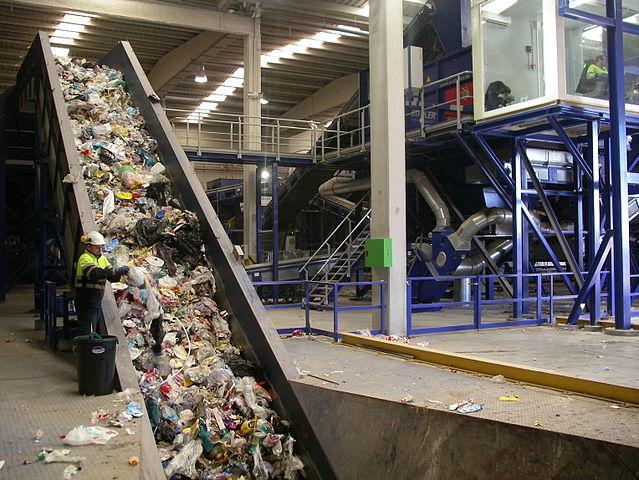

The biggest barrier facing most cities when it comes to providing the level of innovation and infrastructure needed to reduce waste and increase recycling rates often boils down to one factor: Money—or specifically, the absence of it. As budgets dwindle, missed opportunities to leverage problems in waste diversion cost cities millions of dollars in potential revenue each year.
In 2013, low recycling rates caused cities to collectively spend billions of dollars on landfills and lose over $11 billion in commodity revenue from the sale of recyclable material sent to landfills.
Enter Ron Gonen — co-founder of RecycleBank and former deputy commissioner of sanitation, recycling and sustainability for New York City under Mayor Michael Bloomberg’s administration.
Last week, the recycling maverick took the stage at the Municipal Waste Management Association (MWMA) Fall Summit (the environmental affiliate of the United States Conference of Mayors) to announce his latest project, the Closed Loop Fund — a consortium of large corporate companies that plan to invest $100 million over the next five years to support the development of recycling infrastructure and services.
The fund provides zero-interest loans to municipalities and below-market interest loans to private companies to develop local recycling infrastructure. Loans are repaid via landfill diversion savings and/or commodity revenue from the increase in recycling.
To qualify for a loan from the fund, applicants must adhere to the following criteria:
- Demonstrate long term financial viability of the project
- Demonstrate that the project can scale and be replicated by
- Demonstrate the ability to provide detailed reports
- Demonstrate that the project will generate a significant increase of tonnage returned to the supply chain
As co-founder and managing partner, Gonen is confident in the move to blend his experiences as entrepreneur to government official into a unique platform that will provide a framework to help governments innovate. The fund got its start last year when Wal-Mart convened 30 recycling, consumer product and supply chain experts to discuss how to increase recycling in the United States and approached Gonen with a plan.
“We can see some national systemic change with innovative business solutions to address municipal waste. We first saw the opportunity in RecycleBank,” he says. “We also found that some cities had the budget and capital to make the investment, but there are lots of other municipalities that know there is a need but don’t have money. With the Closed Loop Fund we know that if we’re going to fix the recycling issue across the country we need to make sure that access to capital is available.”
Gonen went on to mention during our conversation that many American cities are lacking even basic recycling initiatives like curbside recycling.
The estimated impact from the Closed Loop Fund, if additional investment outside of the already committed $100 million is acquired, could result in 27,000 incremental local jobs, 78 million metric tons of GHG reduction, $2 billion in avoided landfill tipping fees, and revenue generated from selling diverted commodities.
The founding members of the Closed Loop Fund include Coca-Cola, Colgate-Palmolive, Johnson & Johnson Family of Consumer Companies, Keurig Green Mountain, Inc., PepsiCo, Procter & Gamble, Unilever and Wal-Mart, as well as Goldman Sachs.
Though armed with CSR plans and high-level sustainability portfolio goals, the motley crew of corporations behind the initiative are not exempt from the scrutiny of consumers who identify many of these brands as big polluters.
So, why have they decided to come to the table and put their money where their (very public) sustainability plans are?
After speaking with two of the partner corporations, the general consensus is that these companies are claiming to be committed for the long haul, meaning their participation is not a righteous attempt at a publicity stunt, but rather a business investment that they calculate has the potential to pay huge dividends—both for cities burdened with the problem of waste, and their bottom lines.
Practically speaking, by diverting more plastic from the waste stream for re-use, large companies that rely on plastic products can source more recycled content for use in the production of their products.
With a circuitous loop of materials and resources being diverted from landfills and sold back to manufactures in need of material, The Closed Loop Fund aims to solve the challenges for both private and public sector entities.
Monique Oxender, Senior Director of Sustainability at Keurig Green Mountain, Inc. shared the business benefits and technology innovation opportunities that could potentially push their brand’s business trategy forward in the long-term
During a phone interview, Oxender explained:
“We’ve had a recycling issue with K Cups that has quite frankly stumped us. Our motivation for joining the fund is to learn and reduce barriers. This is a high level investment for us and we want to be directly involved and at the table.”
According to Jeff Meyers, Sustainability Packaging Manager for Coca Cola, the idea of getting together with other companies to expand curbside recycling offer lots of opportunity for growth.
“It’s not something that any one company can solve on its own,” he says. “We like the collaboration and packaging formats and products. We can all work together and design more sustainable packaging.”
If the Closed Loop Fund proves to be successful, new discoveries and metrics will provide the pathway for replication.
For additional information on the Closed Loop Fund or to obtain an application for your city, visit www.closedloopfund.com or send an email to [email protected].
Applications will be reviewed by The Closed Loop Fund leadership and partners on a quarterly basis beginning October 29. Grants are set to be funded in 2015.
Image via Wikimedia Commons
Sherrell Dorsey is a writer, social entrepreneur and advocate for environmental, social and economic equity in underserved communities. When she's not obsessively learning how to decrease her carbon footprint, Sherrell contributes frequently on green design, sustainable architecture and environmental policy at Inhabitat.com. Follow her on twitter and visit her website.
Harley-Davidson to Plant 50 Million Trees
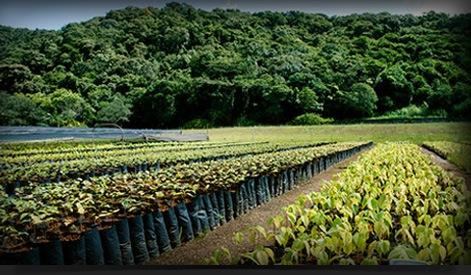

The Nature Conservancy and Harley-Davidson are now partnering with a commitment to plant 50 million trees worldwide by 2025. Yes, I gave this one a double-take, too. The pairing sounds about as natural as Rand Paul writing for Scientific American, so I dug in to find a little more information on this one. Yesterday I had an interview with Geof Rochester, Managing Director of The Nature Conservancy, to learn more about this unusual team.
It turns out the partnership is not as odd as one may have thought. Harley-Davidson has embraced sustainability in recent years, risked committing heresy by launching an electric motorcycle this summer and has indicated it takes climate change seriously. Tree planting is just another cog in the company’s plan to engage its loyal fans and raise awareness about environmental issues many consumers care about—but just do not know how to go about confronting them.
This ambitious plan to plant trees is part of Harley-Davidson’s Renew the Ride program. The company will contribute about $550,000 annually to The Nature Conservancy to help support its Plant a Billion Trees program. The corporate arm of Harley Davidson will work with the company’s dealers and clubs to encourage tree-planting campaigns. Customers and fans who are interested can also make a donation online to TNC in order to support the tree planting efforts.
“You have to remember that one-third of Harley-Davidson’s customers and members either consider themselves conservationists, or belong to a conservation group,” said Rochester, “and at the same time, with what is going on globally, we cannot plant enough trees in the world—this is important for all of us.”
I suppose that is true. One point of biking is to enjoy the open space and scenery, and true to Rochester’s point, you will more likely see a pack of Harley riders on a country road than Fifth Avenue or Rodeo Drive. What is really the key for this program’s success, however, is for those countless rider clubs across the country to take on this ambitious project. As for how all of this is audited, TNC has a strong reputation in this space for how they monitor and measure their tree planting and other environmental programs.
Progress is on the way. So far campaigns by Harley-Davidson on this front have resulted in over 100,000 trees planted along the Atlantic coast in Brazil, and another 100,000 in Virginia this year. The cynic may retort that those initiatives leave about 48.2 million or so to go, but Rochester is optimistic.
“We think it’s important to partner with companies to reinforce the messaging that there is hope, and that there is still plenty of room for people to get involved,” said Rochester as we wrapped up our talk. “People want to feel good about themselves, and planting trees is an activity that can be enjoyed across all groups and all ages. The environmental movement needs more projects like this to reach a broader audience, and we think Harley can help us.”
We want to hear from Harley riders and fans. If your local club or dealership sponsors a tree planting day, would you go . . . and why?
Image credit: Harley-Davidson
After a year in the Middle East and Latin America, Leon Kaye is based in California again. Follow him on Instagram and Twitter. Other thoughts of his are on his site, greengopost.com.
Chevron Tries to Buy Local City Election
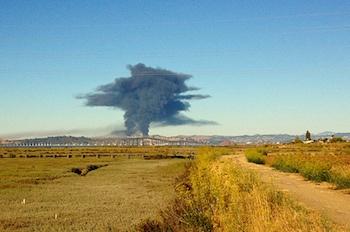

Chevron is spending big bucks -- $3 million to date -- on the outcome of mayoral and city council elections in the town of Richmond, California, a city with just over 100,000 residents. You've got that right -- the company has spent about $30 per resident.
Why all the muss and fuss over a local election? Well, Richmond is the home of a major refinery for the oil and gas producer. The refinery was the site of a 2012 explosion and fire that sent over 15,000 area residents to the hospital with respiratory distress, rashes and other ailments. In 2013, the city of Richmond sued the corporate giant, alleging that the blaze was the result of "a continuation of years of neglect, lax oversight and corporate indifference to necessary safety inspection and repairs." (as quoted in SF Gate).
At the time, Chevron promised to vigorously fight the lawsuit, claiming that it is "a waste of the city's resources and yet another example of its failed leadership," claiming that the lawsuit was designed to shift focus away from a "dysfunctional" city council.
Well, it seems that vigorous fighting includes trying to buy a Chevron-friendly city council that will be more magnanimous to the local employer. According to KQED, "A new council majority sympathetic to Chevron could squelch the suit or pave the way for a settlement more favorable to the oil giant."
We reached out to Chevron for a statement on its investment in this particular election, and this is what they had to say:
"Chevron supports city leaders who share our commitment to policies that foster an economic environment where businesses can thrive and create jobs. The amount of money we spend to inform voters must be viewed in the context of the more than $500 million in local taxes, social investment and spending on local vendors from Chevron over the past five years, and our $90 million social and environmental commitment to the city that will follow once our $1 billion refinery modernization is allowed to proceed. We are proud to be in Richmond – the city and refinery have grown up together over the past century."
There is no doubt that Chevron is heavily invested in the community -- it employs more than 1,200 residents and is the largest employer in the town. But this level of spending, compared to that of the other candidates, smacks of a balls-to-the-walls effort to make positively sure their man (and men and women) lead the city. Chevron's choice candidate for mayor, Nat Bates, has had $1.4 million in advertising spent on his behalf, according to the Los Angeles Times. His main opponent, Tom Butt, has around $40,000 to play with.
Much of this funding doesn't come directly from Chevron. Rather it winds its way through a PAC Chevron supports called Moving Forward. That PAC, in turn, funds an organization called Richmond Working Families for Jobs 2014, which buys many of the ads. If that name sounds like a mouthful, you best believe it was chosen deliberately. Shortly after an area group began organizing itself under the name Richmond Working Families, the Moving Forward PAC created Richmond Working Families for Jobs 2014 -- and bought rights to the URL richmondworkingfamilies.com. These efforts are surely aimed at confusing voters.
Richmond Working Families for Jobs 2014 is also funding negative campaign ads for the city council candidates who are members of the Richmond Progressive Alliance.
While community activists are working to get out the vote and build opposition to the Chevron-funded slate of candidates, leaders were concerned about an overall level of voter fatigue over the issue.
“I have personally received between 20 and 30 mailers from Chevron candidates,” Richmond resident Leon Zhou said during a press conference, held by Richmond Working Families political action committee, as quoted in the Richmond Confidential.
It's stories like these that make campaign finance reform sound like the best idea in the world, but unfortunately, the more money there is in politics the greater a pipe dream it seems.
Image credit: Michael LoRusso, Flickr cc
Why Rwanda’s Youth Are 'Wired' to Lead Africa
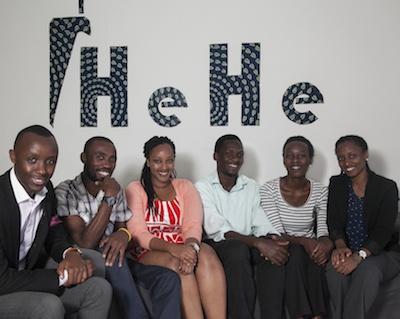

Editor’s Note: This is part four in an ongoing series on Rwanda’s rise. Follow the series here.
They say that home is where the heart is. For many of us, the idea of 'home' conjures feelings of comfort and convenience -- the good life. But what if home is where heartache is?
After residing in Uganda for most of her young life, Clarisse Iribagiza returned to her home in Rwanda kicking and screaming. “When my family moved back, I had no choice,” she reflected. Like many young Rwandans, Clarisse believed that she would only achieve her dreams away from home.
As a small, landlocked country with limited natural resources and a tragic history, Rwanda is often regarded as a place of little opportunity, especially for its youth. Rwanda currently registers a 42 percent youth unemployment rate, and 67 percent of the population is under the age of 25. For years, Rwanda’s youth – alongside neighbors throughout sub-Saharan Africa -- have scrambled for opportunities elsewhere, many thirsting to further their education in the U.S. or Europe.
This ongoing exodus is popularly referred to as 'brain drain.' In 2010, the total diaspora of Africans living outside of Africa totaled 30.6 million, according to the World Bank. A hefty percentage of Africa’s diaspora is highly educated, as demonstrated by UNESCO reports. In the U.S. alone, 50 percent of the African diaspora possesses at least a bachelor’s degree.
Yet a shift is underway across young Africa. According to a 2012 survey by Jacana Partners, a pan-African private equity firm, 70 percent of African students studying at top 10 American and European business schools plan to work in Africa following graduation. No place does the yearning for home seem greater than in Rwanda, thanks to a generation of innovators like Clarisse.
Determined to make the best of the return to her homeland, Clarisse enrolled at KIST, Rwanda’s first technology-focused institution of higher education in its capital city. There, her eyes were opened to the potential for technology, and mobile applications in particular, to transform her home country of Rwanda and greater Africa. In 2010, during her third year, Clarisse entered a six-month mobile training program and competition hosted by MIT. She and a group of classmates built a mobile application that she describes as a mash-up of Yelp and Google Maps.
Failing to win the prize money awarded to the first and second place contestants, Clarisse’s team emerged from the competition with mentors committed to helping them understand the market opportunity and potential for social innovation. Initially setting out to build their own mobile apps in-house, Clarisse soon realized that her business would generate far greater impact by serving as an incubator for mobile app developers. Named after the Kinyarwanda word for “where”, HeHe Labs guides young developers to navigate the future opportunity of mobile in Africa.
In just a few years, HeHe Labs has successfully incubated mobile apps designed to improve operational efficiency for sectors including education, health, agriculture and transportation. And their work is not confined to their country’s borders. Safeboda, one of HeHe’s most successful apps so far, is designed to encourage road safety in Uganda. It’s Uber-like technology vets and geolocates taxi drivers who demonstrate safe driving practices. HeHe’s most recent breakthrough is a digital media store for African content called Nuntu, the first and only platform designed to integrate with local payment systems.
Perhaps HeHe’s greatest potential impact has been delivered through it’s Code Clubs, which help train high school age students to build meaningful mobile applications. “Most importantly, we focus on creating an environment that ignites a passion for learning through research, experimentation and problem-solving,” Clarisse explains.
To affect more powerful change at greater scale, HeHe understands the significance of overcoming Rwanda’s dire education situation. While the challenges are many, access to technology in the classroom is rapidly improving. In 2013, only 14% of secondary schools were connected to the internet and the computer to students ratio was 1:44. But according to Iribagiza, this is quickly changing. Not only has access to education improved dramatically (Rwanda has the highest primary school enrollment rate in Africa with 96.5% children in school), but quality is on the rise as well.
With contributions from innovators like HeHe Labs, there is good reason to expect this rise.
Just ask students from the recently completed class of 2014:
“Being part of HeHe’s Code Club changed my way of thinking. I joined the program doubting my ability to achieve any goal or dream. HeHe made me believe in myself because I met students who had similar dreams as mine and I realized that I was not alone in my pursuit,” says Captone Habiyaremye.
And their motivations are encouraging:
“As I hope to positively impact the world around me, I can think of no better way than through pursuing a career in computer engineering. Whether it involves creating new forms of entertainment for avid web surfers, enabling communication for people across the globe, or building lifesaving technology, computing to me provides solutions to the world’s problems,” explains Yannick Fleury Kabayiza
“My dream is to one day give back to my country of Rwanda. I want to be part of those who develop Rwanda’s technology sector because I believe technology eases people’s lives.”
If you’re wondering where this commitment to address social ills stems from, look no further than HeHe Labs’ founder. As I pointed out earlier in this series, Clarisse embodies a generation of role models who are redefining and reshaping Rwanda’s role in the world.
When I asked Clarisse what drives her to create positive impact in her home country of Rwanda, this is what she said: “I don’t want to be just a bleep on the radar. I want to have an impact and it’s not the same if we can’t do it at home. We’re wired to make an impact here in Rwanda.”
For a deeper look at HeHe Labs, take a look at this video:
Image credits: HeHe Labs
World Vasectomy Day Pushes Men to Take an Active Role in Family Planning
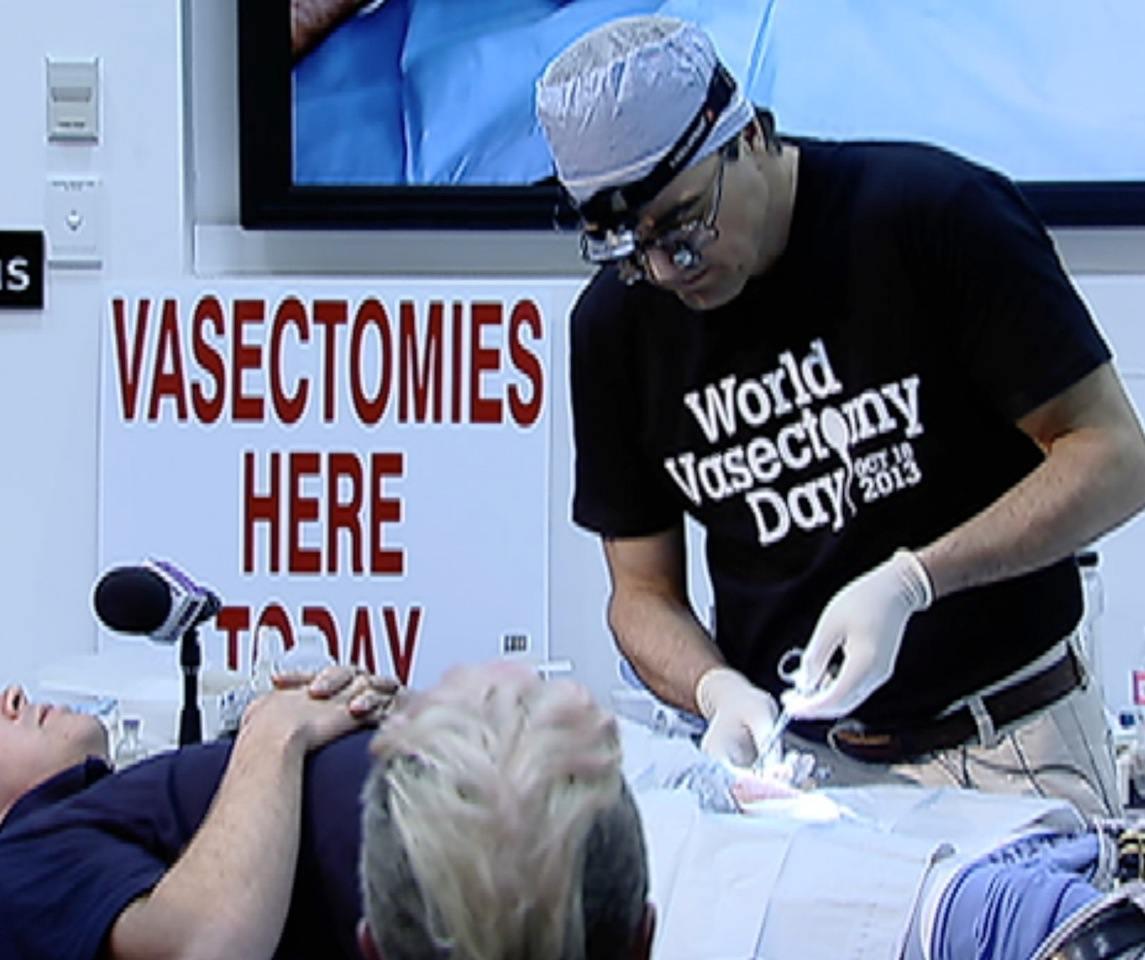

Last year, 100 physicians in 26 countries performed nearly 100 vasectomies on Oct. 18. The occasion? The first-ever World Vasectomy Day, an idea dreamed up by documentary filmmaker Jonathan Stack and urologist Doug Stein to bring more attention to – and to dispel myths around – this permanent form of birth control.
And this year, Stack and Stein are at it again, aiming for 250 doctors in 30 countries to carry out 1,500 vasectomies on Nov. 7 for the second World Vasectomy Day. This year’s World Vasectomy Day will be headquartered at Planned Parenthood of Greater Orlando’s new health center in Kissimmee, Fla., where Stein will be performing and live-streaming free vasectomies for 25 men. In addition to broadcasting Stein’s “vasectomy-athon,” the live webcast will feature feeds from other participating doctors and interviews with family-planning leaders.
Stack and Stein came up with the idea of World Vasectomy Day when the Emmy Award-winning, Academy Award-nominated filmmaker was shooting a documentary about global population and met and traveled with Stein, the world’s leading provider of vasectomies. The pair realized that a film could only do so much to highlight vasectomies, so they hatched a plan for a global day dedicated to the important family-planning procedure.
What’s so unique about World Vasectomy Day, compared to other family-planning campaigns, is its focus on men.
“So many resources over the years have supported women in family planning – as they should have,” Stack told 3p. “But so few resources have gone towards men because we’ve written off men as a bad investment. But we realize, if you don’t get men to be part of the conversation about family planning, then you’re only going to get so far.”
World Vasectomy Day challenges men to get involved with family planning with quasi-macho language: “Stand up and be a man” and get a vasectomy, and “be a hero to your family.” According to Stack, this male-centered approach to family planning has resonated with the public and has earned the campaign support from family-planning groups that traditionally cater to women – like International Planned Parenthood Federation - Western Hemisphere Region and Marie Stopes International.
In addition to educating men on the basics of vasectomy procedures, World Vasectomy Day aims to address some of the psychological barriers that prevent many men from going through with this simple procedure. Some men fear that a vasectomy will compromise their capacity to enjoy sex or give sexual pleasure, Stack said; others feel anxious about the symbolic loss of their virility.
Stack, who struggled with his own decision to undergo the procedure, said that he and many others find that rather than feeling depleted after a vasectomy, they feel liberated – finally free from the lifelong concern that they caused an unplanned pregnancy.
And more than that, these men feel like they did something for their partner and families, Stack said.
“The reality is that women have traditionally had to be responsible for birth control, so it feels good [for men] to say, ‘I’ll take this one on. This one is on me,’” Stack said.
Women have permanent birth-control options like tubal litigations, Stack said, but they are much more invasive than the simple vasectomy procedure. Even in the U.S., there are more tubal litigations performed on women than there are vasectomies, he said.
“Now it’s time for men to step up and take the moral responsibility for family planning,” he said.
Family planning has always been a women’s rights and women’s issue, as well as an environmental one. Over 50 percent of pregnancies in the United States are unintended, Stack said, and clearly, this statistic has environmental impacts.
Stack recognizes that vasectomies aren’t for everyone, he said; an ideal candidate for the procedure would be a man who has decided not to have children or one whose family is complete. But the point of World Vasectomy Day isn’t just to promote this form of birth control or the number of procedures performed on Nov. 7.
“It’s really less about the number of vasectomies and more about the quality of the conversations we help inspire,” he said. “We hope that World Vasectomy Day kickstarts a lot of conversations about family planning.”
Image credit: World Vasectomy Day
Passionate about both writing and sustainability, Alexis Petru is freelance journalist based in the San Francisco Bay Area whose work has appeared on Earth911, Huffington Post and Patch.com. Prior to working as a writer, she coordinated environmental programs for Bay Area cities and counties. Connect with Alexis on Twitter at @alexispetru
KKR Green Portfolio: A Sustainable & Lean Private Equity Machine

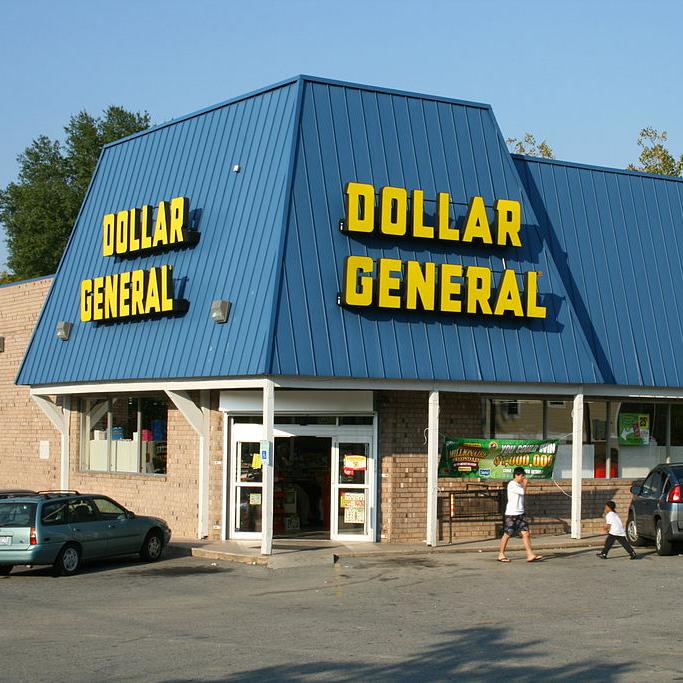
What do Dollar General and the U.K.’s Pets at Home have in common? They are among the 27 companies that have been through the KKR Green Portfolio Program. Launched back in 2008 in a partnership with the Environmental Defense Fund, KKR designed the program to optimize financial and environmental performance within its portfolio. With revenues close to $3.4 billion, the 38 year old private equity firm has been not only a pioneer in the leveraged buyout industry, but in transforming companies into leaner and more sustainable operations to make them attractive to future buyers. KKR recently announced the program’s most recent results for 2013.
Considering the gut reaction many of us have to the words “private equity,” one big question comes up: why would a firm such as KKR take on such a task in the first place? Most of us do not plunk CSR or ESG (environmental, social and governance, the term our friends across the Atlantic prefer), in the same thought or sentence when describing these types of companies. So to find out, I had an interview with KKR’s Vice President for ESG Strategy & Communications Ali Hartman.
“At the end of the day, what this program goes back to is running a business in the best way possible, and sustainability has to be at its core.”
The way KKR’s Green Portfolio program works is similar to any company’s strategic agenda. With a portfolio containing over 100 companies at any given time, not every single firm under KKR’s umbrella will go through this process. Those that do enter the program are evaluated, and then KKR identifies what it calls KEPAs (key environmental performance indicators) to give a starting point. Next, KKR professionals establish metrics and a baseline from which to gauge the individual company’s improvement in performance. An action plan is then developed, and finally, KKR measures and reports the results. In the end, it really sounds like what any private equity firm would do with a newly acquired company—only that sustainability is part and parcel of this long process.
“Our ESG philosophy is aligned with what we do at KKR—find and build businesses that will be better off than when we found them,” Hartman explained to me from her New York office. “Sustainability and ESG fit with this concept, and really, before this became known as ‘ESG,’ the private equity space was addressing these issues, without really calling it ESG. But in the last 5-10 years, we have seen ESG management become more methodically and consistently integrated within KKR’s approach to business and its portfolio companies.”
One example of KKR’s success is Dollar General, one of the largest discounters in the U.S. By combing through its operations, the Green Portfolio team assigned to this company was able to discover ways to make the company more efficient. The resulting new practices may not sound the most innovative, but you cannot dispute the savings. In five years, the company saved or generated a total of over $200 million, mostly from waste diversion efforts with the mounds of corrugated cardboard in which all those goodies such as $1 tubes of toothpaste were delivered. Revamping Dollar General’s transportation fleet and building a new centrally located distribution center contributed to over $400 million in saved fuel costs between 2008 and 2013. The company’s improved performance closely correlated with its reduced greenhouse gas emissions as well.
Across the pond, Pets at Home did not do too shabby either. As the cliché goes, little things add up to big savings: creating green teams at locations, installing LED lighting and ramping up recycling led to over $11 million in savings while avoiding costs due to recycling 31,000 metric tons of waste.
It is projects like these that help KKR with its core mission: buy companies that are underperforming, right-size their operations, build value and then sell them on. But in a world where fuel price volatility is the norm and resources are becoming more scarce and expensive, Hartman explained that to overlook sustainability, in any sector, is a fool’s errand. Add the fact stakeholders are demanding more transparency and social media can ignite a PR or marketing headache in a second, companies have no choice but to integrate environmental and social issues with the financial questions. And in the end, KKR has found the formula we see more and more—better environmental performance runs often parallel to financial performance.
“We’re in a world that is increasingly complex--it’s not going to be less demanding or less transparent in the future. We have to acknowledge the fact that the rate of information will only increase,” said Hartman. “We see sustainability and ESG as a necessity in this new world order, whether it’s because of increasing costs, diminishing resources or stakeholder demands. Sustainability is not a sidecar and it’s not a nice to have—it’s becoming a must have. We just can’t ignore these issues that are confronting companies today, from supply chain sustainability to the need to reduce waste.”
Learn more about KKR’s Green Portfolio Program here.
Image credit: Ildar Sagdejev
Change.org Extends Gender-Neutral Parental Leave Policy


Change.org announced recently that it will amend its parental leave policy. The site that allows users to create petitions will increase the paid time an employee can take for the birth of a child from six weeks to 18 weeks. This is extended to both fathers and mothers. The new policy also includes people who adopt as being eligible for leave. Change.org has about 200 employees, and about 51 percent are women.
The company’s new policy goes further than federal law. Although the 1993 Family and Medical Leave Act (FMLA) provides job protection so parents can take leave, there’s no guarantee of pay during time off. Jennifer Dulski, president and CEO of Change.org, told CNN Money that “giving people unpaid leave only solves half the problem.” The company’s goal was “to create a generous and equal leave policy that supported all parents,” she said.
Other companies in the tech world offer generous parental leave. Google offers 22 weeks of paid leave for biological mothers and seven weeks for parents who adopt. Facebook, Instagram and Reddit offer 17 paid weeks for both parents, while Yahoo offers all mothers, including those who give birth or adopt, 16 paid weeks. Fathers who work at Yahoo get eight weeks.
The sorry state of parental leave in the U.S.
David Hanrahan, head of global human resources at Change.org, wrote an opinion piece for the Huffington Post and laid out the sorry state of parental leave in the U.S. “The state of parental leave in the U.S. sucks,” he bluntly stated. Indeed it does. He points out that the U.S. is one of only three countries -- Oman and Papua New Guinea are the others -- that don’t mandate paid parental leave at the federal level.
Hanrahan challenges other companies to “close the gap” by realizing the “ power they have to provide fair and equal leave for their employees.” He specifically challenges other U.S. companies to “step up and offer paid parental leave -- for all parents -- at least at the FMLA minimum of 12 weeks.” He asks FMLA covered companies, or companies with over 50 employees, to lay out a blueprint to provide 12 weeks of fully paid parental leave for both parents. Companies have an “opportunity to take tangible action to value the role of parents,” Hanrahan said. He urges other companies to join Change.org in “offering paid and equal parental leave.”
Part of Change.org’s campaign to increase awareness about the need for better parental leave is the use of the hashtag #ChangeLeave. PR Daily calls the campaign the “best type of content marketing—purpose-driven, multi-platform and well executed.” It's an issue that needs more awareness as paid parental leave is important. Or as President Obama said in June, “These aren't frills -- they're basic needs.”
Image credit: Bev Sykes